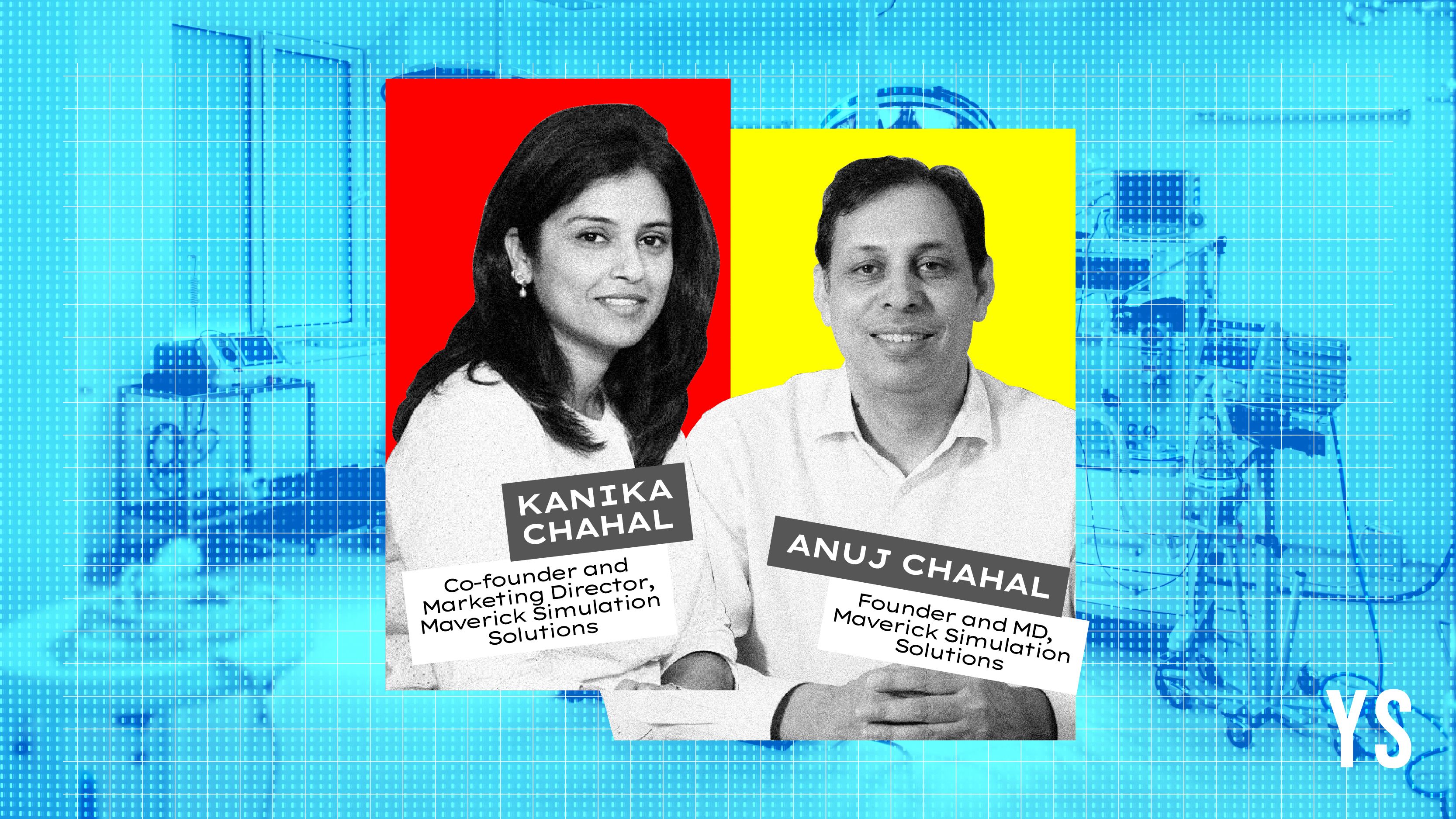
After over a decade of providing 3-D printing and scanning services to the medical industry as Maverick Solutions since 2006, Maverick Simulation Solutions has since pivoted to creating and providing simulators for medical practitioners and trainees.
The new medtech company, founded by Anuj Chahal in 2019, faced a few opinionated deterrents during the early stages of its metamorphosis.
“When we first started, we used to often hear that there was no need for this (simulators) as there was no shortage of cadavers to practice on. But as Covid hit, the unavailability of cadavers became a reality, and the demand for simulators increased,” says Kanika Chahal, Co-founder and Marketing Director of Maverick Simulations, who joined the company in 2019.
The company now has over 40 simulators in its portfolio, of which 30% are produced at its facility in Dwarka, New Delhi, the company's headquarters.
“About 30% are in-house, 30% are being developed in Europe, but the technology is ours. We import about 10% and the remaining 30% are hybrid models where certain parts are imported and incorporated into our tech,” Anuj, who is also the Managing Director of the company, tells YourStory.
Maverick Simulations has about 50 employees, many of whom work out of New Delhi and others in different states. A few people are stationed in Switzerland, Germany and the United Kingdom.
The company, which began by providing its services to government medical institutions in India, is now working with private institutes as well.
Simulators over cadavers: The new way
The first simulator that Maverick introduced was the Anatomage Table—a 3D virtual dissection tool that uses real human tissue data, allowing students to explore anatomy digitally before hands-on cadaver training. It had first pitched it to AIIMS Delhi along with a few software solutions.
“The people at AIIMS understood the value of the Anatomage table and warmed up to it readily. Now they use it extensively for their pre- and post-surgery planning. The patient’s Digital Imaging and Communications (DICOM) data, if available, can also be incorporated into the simulator,” says Kanika.
The B2B company now has over 100 customers to whom it provides various kinds of simulators, like the Anatomage Table.
Also Read How Serigen Is Pioneering Regenerative Medtech in India
How Serigen Is Pioneering Regenerative Medtech in India
Some of these include TestChest—a respiratory simulator that replicates human lung mechanics—and “Made in India” simulators—locally manufactured task trainers and high-fidelity mannequins designed to make medical training more affordable and accessible.
They also create simulators such as LuSi—a neonatal lung simulator developed in collaboration with Swiss innovators—which accurately mimics preterm infant respiratory dynamics, providing essential Neonatal Intensive Care Unit training for healthcare professionals.
Anuj says there are broadly three kinds of simulators: low fidelity, mid fidelity and high fidelity. An example of a low-fidelity simulator would be suture pads, which help medical students improve their motor skills, like stitching and cutting.
Low-fidelity simulators are not equipped with any electronic devices and aren’t optimised with any software. A high-fidelity simulator would be one that would help trainees learn how to perform cardiovascular procedures like catheterisation or stenting.
“Students have only a few ways to learn. Either learn the complicated procedure by doing it on a patient during a surgery or in a simulated environment with a prototype. The latter is a much safer environment without any risk of fatality to the patient,” explains Anuj.
The simulators can cost anywhere between Rs 2,500 and Rs 5 crore, depending on their fidelity and purpose. The founder says that around 40 of its clients, including multiple AIIMS colleges, have bought the high-end simulators, which are being used in hospitals providing simulated environments with prototypes that manoeuvre like a human.
He adds that medical students can’t depend on using cadavers alone anymore.
“Cadavers are only used when teaching anatomy in the first year. There are over 20 other departments in medical schools. You can’t, for instance, ask a student to learn how to draw blood on a cadaver because there isn’t any,” he says.
Funding
Maverick Simulations recently raised Rs 50 crore in an internal round to enhance its R&D facilities.
“This is a proposed budget for this year at R&D. We also have a triparty agreement with IITs and AIIMS for new product development as well,” Anuj shares.
The CEO also mentions that while the use of artificial intelligence and machine learning in medtech is quite new, the company is maintaining a progressive attitude towards adopting it when they’re adequately functional.
Also Read Medtech firm Medikabazaar undergoes management reshuffle
Medtech firm Medikabazaar undergoes management reshuffle
Competing with international companies like the Eindhoven-based Medsim, and the Stavanger-based Laerdal Medical, Maverick Simulation Solutions maintains its edge due to its cheaper prices and local manufacturing.
“Our key strengths lie in our indigenous products, in-house design, dedicated R&D, and robust production capabilities—all backed by committed after-sales support. We don’t just focus on selling simulators to drive profits; our core vision is to bridge the gap between theoretical knowledge and real-world clinical practice,” says Kanika.
The company also offers a “Train the Trainer” programme where its team of experts ensures comprehensive training for facilitators.
“This approach maximises the simulator’s utility for both trainers and trainees, encouraging more effective, hands-on learning experiences,” she reiterates.
With its expansion to work with private bodies, the company plans to increase its private customer base from 20 clients to over 100 by the end of FY26.
Edited by Jyoti Narayan
Original Article
(Disclaimer – This post is auto-fetched from publicly available RSS feeds. Original source: Yourstory. All rights belong to the respective publisher.)